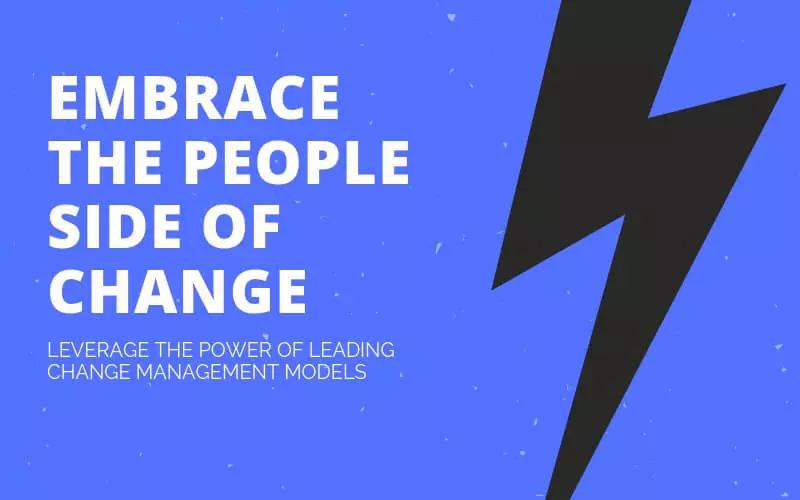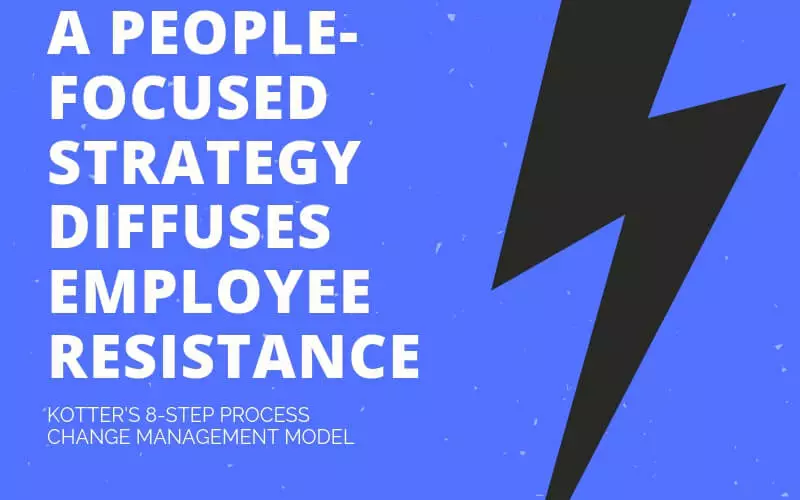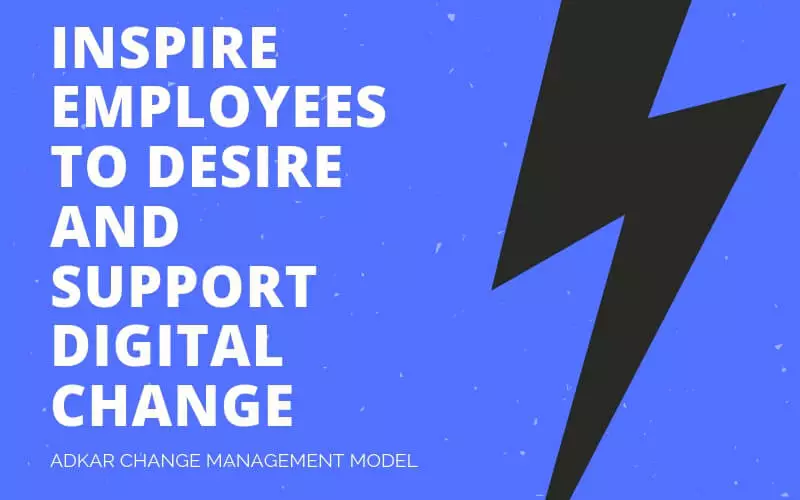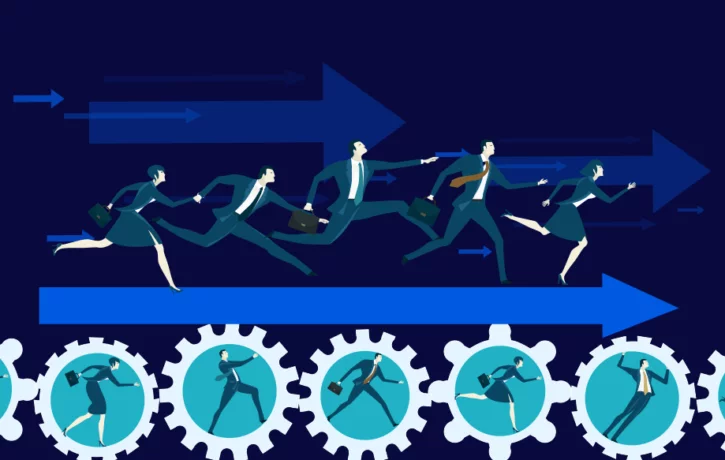How do you overcome the enemy of your company’s digital transformation?
You prepare for organizational battle — consider change management models your top line of defense against internal resistance.
Change resistance stalls your plans to restructure with three dangerous words: “Why should we?”
McKinsey research reveals that every 7 out of 10 change management initiatives fall flat, and for one reason. Bad change management fails to win over employees who feel oversaturated with digital change.
Over two years alone, Okta’s Businesses at Work report shows a jump in the median number of apps used by companies: a whopping 24%.
Now more than ever before, enterprises are going “all in” on stacking cloud apps.
“And companies aren’t just using different apps, the average organization is also increasing the number of apps they use,” according to Okta.
This poses a challenge for change managers, who must execute these changes and combat growing change fatigue within organizations.
Dive deeper: Here’s how to win the digital transformation race.
Efficiently adapting to everyday changes in the digital workplace

Organizations cannot view change as a one-stop event. It is vital to the health of your company to leverage a change framework — a pivotal strategy to evolve continuously on the digital frontlines. Reacting quickly to changes in the marketplace increases your bottom line faster than that of the competition.
An onslaught of new software is flooding the market and changing the way organizations do business.
Just look at how Salesforce has shaped the sphere of customer relationship management — or the way SEMRush has transformed search engine optimization.
As enterprises integrate new digital tools into business processes, it’s the user experience that suffers the negative brunt of poorly executed change. New systems have to be learned. They disrupt human habit, require frustrating changes in behavior, and breed resistance.
No company’s department is safe — and it exasperating and time-consuming for employees who struggle and fail to achieve digital fluency.
Daily little changes add up and demand versatility in change management models. The following three change management models will prepare you to embrace the people side of change — and equip you to evolve with the whiplash speed of disruption.
Best 3 change management models to guide your digital transformation
1. Lewin’s change management model

- Unfreeze.
- Change.
- Refreeze.
During the unfreeze stage, the organization prepares for change by critically evaluating current processes. For your business to thrive in the future of work, it is essential to address resistance to change.
Lewin’s model offers business leaders a strong tool to administer comprehensive improvements, although unfreezing takes time to fully set into motion.
The change stage is when implementation happens. Communication, support, and education are critical in supporting an enterprise-wide transition — and to confront challenges in your implementation as soon as they arise.
To reinforce change in day-to-day tasks, the refreeze step solidifies your company’s new status quo. This stage helps you support your individual employees as they acclimate to new business practices— and make sure your changes stick.
When undergoing a major transformation and shifting to a digital-first business strategy, Lewin’s change model offers a high-level approach to ease organizational disruption.
2. Kotter’s 8-step process

- Create a sense of urgency.
- Build the change team.
- Formulate your vision.
- Communicate the vision.
- Remove barriers to change.
- Create short-term wins.
- Maintain momentum.
- Establish the new status quo.
This people-focused approach is adept to help leaders diffuse a common barrier that blocks digital change: employee resistance.
However, without bringing employee feedback into the equation, this top-down approach could antagonize your staff, creating internal divide. Opening dialogue and achieving buy-in from your employees is needed to achieve Kotter’s approach.
Use a Digital Adoption Platform (DAP) to ease your change management struggles. Request a demo.
3. ADKAR model

Flexibility shines in the ADKAR approach, which is ideal to deploy incremental changes — especially considering small frequent changes are less disruptive.
Concentrating on the human factor in your business means desired changes carry much stronger odds of success.
Research shows that when effective change management is implemented, odds are on yielding a big payoff: 143% on your ROI. However, with only a quarter of companies able to sustain long-term gains from these initiatives, executing a solid change management strategy is key.
ADKAR is an acronym, touching on the five goals that need to be achieved to affect successful change.
- Awareness (of the need to change).
- Desire (to participate and support the change).
- Knowledge (on how to change).
- Ability (to implement required skills and behaviors).
- Reinforcement (to sustain the change).
The foundation of a high-impact change management model is communication. Make it a top priority to open dialogue with your team and explain why change is beneficial to them. This allows your company to reduce employee resistance.
Inspiring the desire to change is usually the most challenging part of executing the ADKAR model. After all, the reasons employees resist workplace change boils down to basic psychology — we fear change, and that fear broods anxiety in the workplace. Therefore, it is beneficial to outline a clear plan showcasing the value of your new digital transition — and then proceed to rally the corporate forces.
The knowledge goal is achieved by breaking down the change into steps and teaching employees what role they play in the process.
Then you need to make sure all employees are trained adeptly to fulfill their role in the change process.
In the last stage, reinforcement offers incentives and rewards to ensure that the desired change is maintained.
One of the most impactful change management models, ADKAR empowers leaders to get to the heart of change — and minimize employee alienation in the process.
Change Strategy: Your Lever to Lift Massive Growth in the Future of Work
In times of accelerated change and disruptive innovation, change management models are powerful strategies to push your digital transformation journey forward.
When you take a strategic approach to implementing change, you’ll secure the success of your ongoing digital changes — no matter how rapidly the landscape moves next.
__________
WalkMe’s Digital Adoption Platform (DAP) transforms the user experience in today’s overwhelming digital world. Using artificial intelligence, engagement, guidance, and automation, WalkMe’s transparent overlay assists users to complete tasks easily within any enterprise software, mobile application or website. Discover how a DAP can revolutionize your business — request a demo today.

